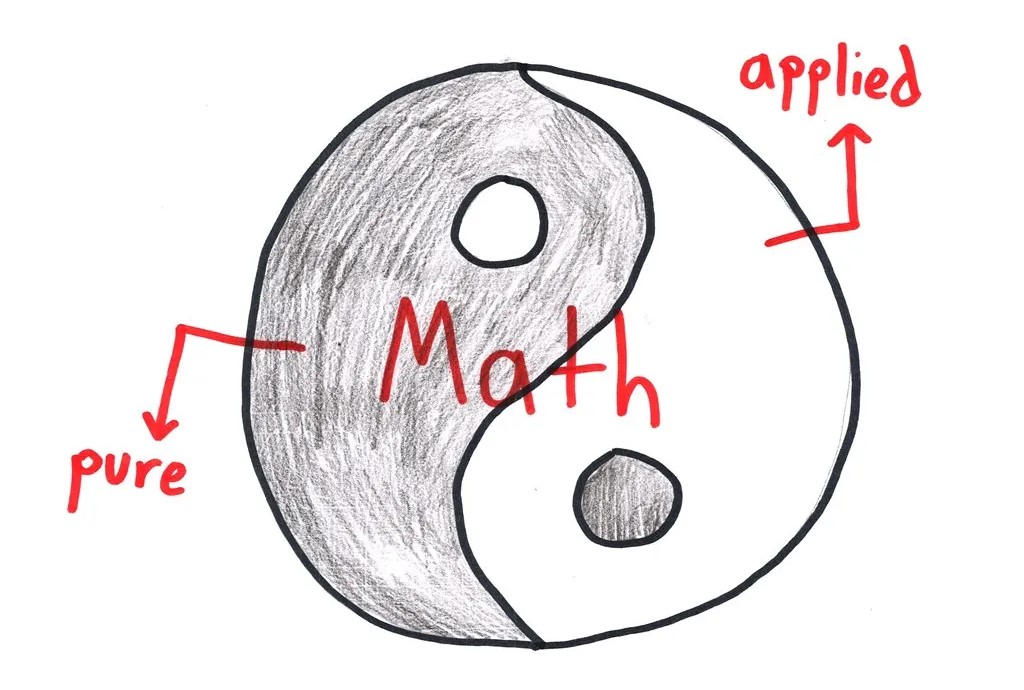Mathematics for mathematics' sake: Who is called a pure mathematician? What does he/she do?
Leonardo da Vinci said, “No research that cannot be demonstrated mathematically can be considered real science.” He is remembered with his words. This saying is even more true today: Every research (even in the arts and social sciences) involves mathematics. But what mathematics exactly?

Generally speaking, there are two different types of mathematics. These are pure and applied mathematics. Pure and applied are not necessarily mutually exclusive. Many great mathematicians are working in both fields. However, the foundations of mathematics come from pure mathematics.
Just as anteaters will always need ants, applied mathematics will always need pure mathematics.
What is Applied Mathematics?
Applied mathematicians focus on real-world uses of mathematics. Engineering, economics, physics, finance, biology, and astronomy; All of these fields need mathematical techniques to answer questions and solve problems. Applied mathematicians are often motivated by problems arising from the physical world. They use mathematics to model and solve these problems.
Pure mathematics is the study of mathematical concepts independently of any application outside mathematics. These concepts may originate in real-world concerns, and the results obtained may later turn out to be useful for practical applications, but pure mathematicians are not primarily motivated by such applications. Instead, the appeal is attributed to the intellectual challenge and aesthetic beauty of working out the logical consequences of basic principles.
Proof is the essence of mathematics. Any mathematical result must be derived from first principles using a certain chain of logical reasoning. The proof is what distinguishes mathematics from other intellectual endeavors. This idea will also lead us to pure mathematics.
What is Pure Mathematics?
Pure mathematics is not about applications. Nor is it related to real-world problems. Pure mathematics is about patterns and ideas. In the simplest terms, pure mathematics is mathematics for mathematics' sake. Pure mathematics explores abstract concepts, complex theories, and previously unsolved problems. For example, “Are there an infinite number of twin prime numbers?” They try to find answers to questions such as. They are not interested in whether the answers they find have a real-world equivalent.
Pure mathematics is therefore largely an academic endeavor. Pure mathematicians test each other's hypotheses and conduct studies on yet unexplored topics related to mathematics. Pure mathematicians have no goal in doing this. However, this does not mean that pure mathematics is useless.
There are many historical examples of discoveries in pure mathematics that seemed useless at first but had important applications years later. But the original purpose behind a groundbreaking equation or formula is rarely “usefulness.”
Pure mathematicians are like explorers trying to complete a map of uncharted territory. Applied mathematicians are like sailors who use charts and maps made by pure mathematicians. Both have important roles in the advancement of science. However, applied mathematics will draw its power from pure mathematics.
Why Is Pure Mathematics Important?
As we said, there are many examples in pure mathematics that seem useless at first but have important applications years later. For example, complex numbers were considered absurd and useless before the 15th century. But today, complex numbers are at the heart of physical applications.
For nearly 2000 years, mathematicians tried to deduce the fifth Euclidean axiom from the other four axioms. In 1830 Lobachevsky and Bolyai proved the independence of the fifth axiom. This was a revolutionary discovery, but it was of no use to anyone until Einstein applied it in his general theory of relativity, meaning it was purely theoretical.
In the past, number theory was seen as an example of useless mathematics. Years later, the results of number theory, especially the theory of prime numbers, were applied to the design of computer security systems. This way, we are protected by math when we book, shop, or bank online.
We owe the computers we use to pure mathematics
The Entscheidungs problem was formulated by the famous mathematician David Hilbert in 1928. The problem asks whether there is an algorithm that takes a statement as input and answers “yes” or “no” depending on whether the statement is universally valid. Alonzo Church and Alan Turing answered this question independently of each other in 1936 and 1937. In his paper, Turing formulated an abstract machine that we now call the Turing machine.
The Turing machine was an imaginary device that mimicked the process of performing arithmetic calculations with a pen and paper. The machine had an infinitely long tape (memory), a head that could move one step at a time, read and write from the tape, a finite instruction table that gave instructions to the head, and a finite set of states.
Since such a machine has an infinitely long tape, it cannot exist outside of mathematics. Any calculation that can be done by a real computer can also be done by Turing machines. The key difference is that, unlike real computers, the amount of data Turing machines can read, process, and write is unlimited.
It is perhaps a feature of pure mathematics that the mathematician is not constrained by the limitations of the physical world and can use imagination to create and construct abstract objects. It is also noteworthy that an abstract problem related to the foundations of mathematics laid the foundations for the emergence of the modern computer.
In conclusion
In this article, we wanted to remind you of a basic distinction. From time to time, when faced with certain mathematical discoveries, the question "But what good will this do?" comes to many people's minds. However, a pure mathematician does not care whether his invention works or not. What really interests him is the process of discovery. Anyone who can use mathematics himself is a kind of applied mathematician. Pure mathematicians, on the other hand, will spend years solving seemingly “impossible” problems. They are the “explorers of the sea” and without them, mathematics would never advance.
